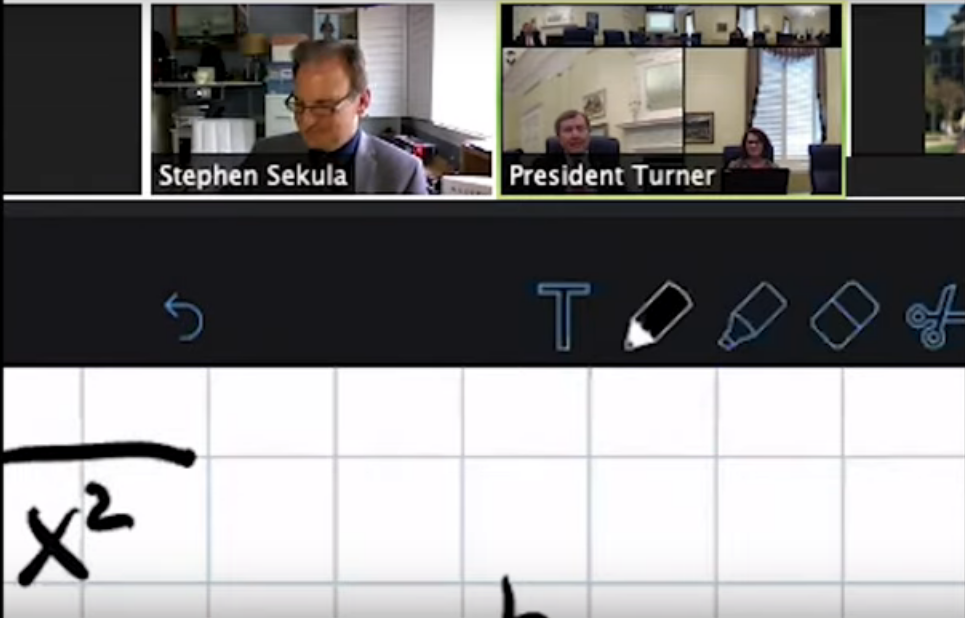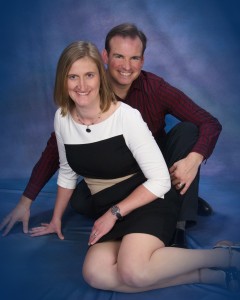
Facebook recently added a “Your 2012 Year in Review” feature. It claims to show you the “20 biggest moments” in your life in 2012.
It sucks.
In no way did it capture anything that was important in my life this year. Why? Well, first and foremost, I don’t post strongly personal and important things on Facebook. I post things on Facebook that I don’t mind coming back to haunt me in a decade. By taking my most personal information out of the hands of Facebook and, instead, culturing my own creative outlets (like this blog), I happily defeat Facebook’s automated attempt to “get to know me” so well it can tell me what was important to me in 2012.
Since I refuse to let services like Facebook dictate the details of my life, I decided to instead write this. 2012 was, indeed, a year to remember. Unlike 2007 (prior to now, the most memorable year of my life simply due to the sheer number of awful things that happened that year), this one was a year of personal growth, global discovery, and the making of history. Here, in sort of a “Top 6 list,” are the memories of this year that I will not only cherish forever, but likely live to rue.
Number 6: Teaching the SMU Course on the Scientific Method and Critical and Creative Thinking

When I was first offered an interview at SMU, I did the first thing I always do when wanting to learn about a new place: I waited for my dad to beat me to a web browser and then tell me all about the place. Sure enough, dad sent me a letter on December 7, 2012, that contained a link to the course website (http://www.physics.smu.edu/pseudo/). He stressed in the letter that what was impressive about this course was that it was taught in the physics department as a physics course. In fact, this is one of the distinguishing features of this course; there are almost no other places (of which I am aware) that host such a course so consistently in its physics department. Much of the time, courses on scientific process and thought are left to philosophers, who have almost no experience actually practicing science.
This year, I had the privilege of teaching this course with Profs. John Cotton and Randy Scalise. It was an eye-opener in many, many ways. First, it was a chance to engage with students who represent a true cross-section of SMU, not just physics majors and minors, engineers, and pre-meds. Second, it was a chance to learn to teach in a highly varied and entertaining way, while challenging students to dig deeper and stop writing essays. Third, it reminded me about why I also like teaching physics (you know, all that math stuff), and got me thinking about how I might incorporate lessons from this course into my normal physics courses (e.g. for the pre-med and pre-dental students).
Number 5: Earning my First Federal Grant
This year marked a new epoch in my professional life as I was favorably reviewed by a panel in the U.S. Department of Energy and received my first Federal Grant. 90% of high-energy physics (HEP) research is funded by the Department of Energy’s Office of Science. Its total budget for HEP is less than a billion dollars (closer to $700 million) for the entire country, including national laboratories and university programs. To write you first favorably reviewed grant proposal is a key step in becoming a mature physicist, and since writing proposals was a skill I learned only once I became a faculty member, it was a nail-biter for me right up until my grant proposal passed review.
Sure, the money was barely enough to sustain the research effort (e.g. pay my post-doctoral researcher, Aidan, the beating heart of my research effort on ATLAS), but it was well spent. I was able to support Aidan’s salary and even send him to a workshop where he was the face of his ATLAS Higgs analysis.
The key now: repetition, repetition, repetition. In order to sustain this effort, the U.S. needs to get past the “fiscal cliff” so agencies like DOE can plan for the budgets they were supposed to allocate back in October. Everything is on hold until that mess is sorted out.
Number 4: The Completion of our First Year in our Home
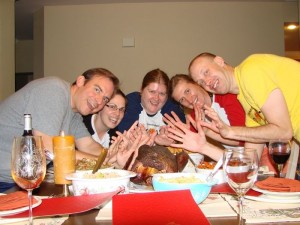
We bought our first house in 2011. Just a week later, the house was partially destroyed by a flood when the attic water heater let go. That summer was spent watching a team of outstanding contractors put the house back together, good as new (and, in fact, better than the condition in which we bought it). This past summer marked the completion of our first year in our home, and we have been very happy.
We put in a small garden in the back. I installed some daisy-chained rain barrels to help with conservation and watering of plants. The water is pumped purely by gravity and feeds the front and back yards. We ripped out the beds of lava rock left by the previous owner, turned the soil and repaired it (with mushroom compost and expanding shale to break up clay), and planted bushes and flowers. The house became as home as we put our own personalities into it. We love to entertain here. We love to have family visit here. It’s a big house, but in Dallas such a place is not only within our budget, but a welcome way to have family and friends join us for long stays in comfort and privacy.
And we NEVER get tired of hosting a good Turkenfunken here!
Number 3: Applying Science to Alter my Weight
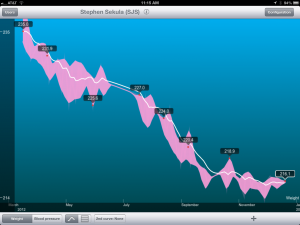
Weight loss involves changing the balance of energy in and energy out from the body. It sounds simple. It’s not. But with focus, patience, and dedication – something I lacked until this year – it can be done. Between regular exercise and long walks with Jodi, and cutting the calorie intake, I lost 35 pounds this year (starting at 248 lbs on Jan. 10). I have more to go – another 25 and I’ll be relatively well outside the danger zone of my BMI – but it’s already had a tremendous effect on the quality of my life and my health. It’s been especially good for my stress levels (as in, I don’t get so easily stressed anymore).
How did I do it? A combination of data and dedication. Data were entered and gathered using LoseIt (http://www.loseit.com), a Withings Scale (http://www.withings.com), and Fitbit (http://www.fitbit.com). Calories in were countered with calories out. There are always stalls – I was in one in the spring and I am in one now – but patience and perseverance pay off. ALWAYS.
Number 2: The Discovery of One (Maybe Two?) New Subatomic Particles
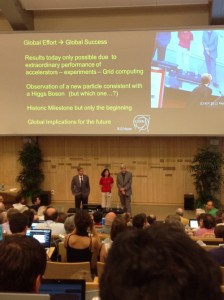
A multi-decade investment of people, money, time, and brainpower paid off this year when both my experiment, ATLAS, and our competitor experiment, CMS, announced on July 4 the discovery of a new subatomic particle. The particle is so far consistent with the Higgs Boson, the particle that is a manifestation of the Higgs Field, which gives mass to subatomic particles (e.g. quarks, leptons, and gauge bosons).
I was there on July 4 during the announcement, near the front of the line of people waiting to get into the auditorium.
There are mysteries that still remain. What is the exact nature of the coupling of the Higgs with different particles, including fermions (like tau leptons and bottom quarks) and some gauge bosons (like photons). The coupling to the di-photon final state is still curiously stronger than predicted by the Standard Model. This could just be an experimental effect (some systematic error) or purely a statistical effect (more data will show that the upward movement of the coupling was a fluctuation). Or, it could be hints of unexpected physics right there in the Higgs.
The mass of the Higgs is also an unresolved puzzle. There are two channels that dominate the measurement of Higgs mass: H -> ZZ and H -> photon photon. These channels measure the masses to be slightly different, with tension between their values (they are consistent within uncertainly, but not close enough to make use think something isn’t going on). Again, this could just be an experimental effect, or statistics, or it could be something else. Might we have observed TWO new subatomic particles close in mass?
We’ll be pushing out all kinds of new analyses in 2013 with the data we finished taking a few weeks ago. We’ll all have to wait and see.
Number 1: Ten Years of Marriage
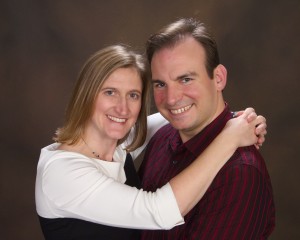
This year marked the 10th anniversary of my marriage with Jodi. Of course, we spent the anniversary as we usually do these days – with Jodi returning from a trip and me departing on a trip. We missed each other at the airport by just a few hours. That’s life as a physicist sometimes.
It doesn’t matter. The day matters less than the marriage. What’s important is that through three changes in jobs (MIT, Stanford/Ohio State, and SMU), four moves (my move from CA to WI and her move to a new apartment after we got married, our move to MA, our move to CA, and our move to TX), and ten years we are happy and finding new adventures. One thing we are looking forward to after the tenure process is a road trip to see some of the places we’ve heard about since coming to Texas, but which we never have time to see. So we’re still planning for things that are years away.10 years of marriage to Jodi – definitely my number one memory of 2012.

